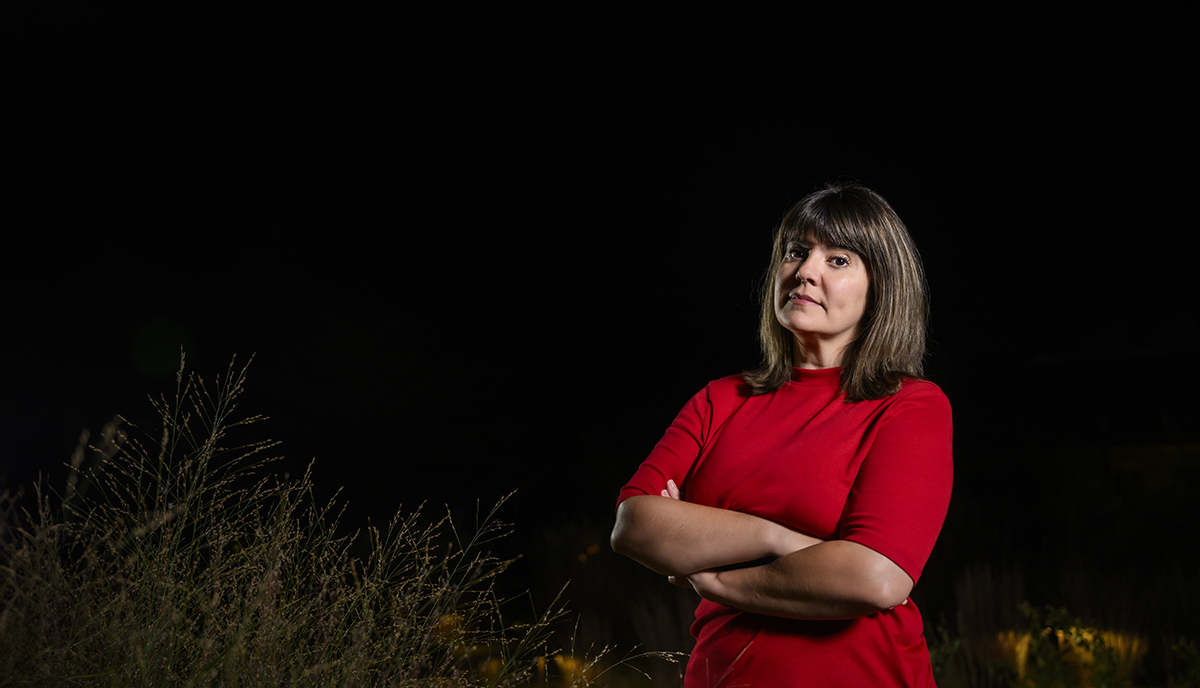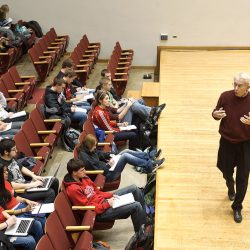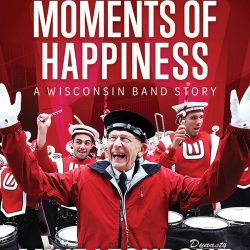How to Study a Star
Astronomy professor Melinda Soares-Furtado has her sights set light-years beyond our solar system.

Soares-Furtado: “It’s weird to think that stars are cannibalizing their own planets all the time.” Althea Dotzour
Devoured worlds and cannibal stars may sound like sci-fi fodder, but for astrophysicist Melinda Soares-Furtado, they’re what keep her busy on a normal day in the office.
Soares-Furtado is an assistant professor in the UW Department of Astronomy. Her research examines the ages and characteristics of stars and their planetary companions, the interactions between them, and what happens when those interactions end in planetary ingestion.
“It’s weird to think that stars are cannibalizing their own planets all the time,” Soares-Furtado says.
It’s also revealing. “Even in these planets’ end-of-life demise, there is information about what they were composed of, which can tell you things about how they were made.”
These planetary engulfment events also leave behind chemical fingerprints that Soares-Furtado and her colleagues use to determine the composition of an ingested world and how those materials might influence the observable properties of the cannibalizing star.
But since humans first crossed Earth’s outermost atmosphere into space, astronomy has been about more than studying celestial bodies well beyond our reach — and so, too, is Soares-Furtado’s curriculum. In her introductory astronomy course, she pairs the calculations and scientific modeling that earn her students a quantitative-course credit with humanities-based discussions about studying space.
“Being part of the College of Letters & Science, there is this ability to bring a liberal arts lens to thinking about what it means to be a human being in the solar system,” Soares-Furtado says, “to recognize the ways that our species is spreading out beyond the planet into low-Earth orbit and exploring the solar system, and to think about how that opens up new frontiers of exploration and discovery.”
How does this interdisciplinary approach enrich your students’ understanding of astronomy?
In addition to a cumulative, quantitative final, I have a mastery demonstration project where students can choose whether they want to take a midterm exam or to write something. I also have a media component if they want to do something more artistic, like an infographic. Maybe they want to go deep and think about a NASA mission, or about space debris mitigation, or about the lack of policy on who has rights to mine the moon. … I’m trying to be very mindful of what’s expected for a quantitative course, but also of where there is some ability to introduce opportunities for students to engage with an astronomy course with a fair bit of math in ways that really resonate with them.
You were part of a team that recently discovered the nearest and youngest terrestrial-sized planet. Any other resemblances to our Earth?
The star it’s orbiting is incredibly Sun-like in terms of its mass, its properties, even its abundance of iron and other elements. So we have a host star that, for all intents and purposes, is a young sun, and that terrestrial world we found is one of three worlds that are orbiting that star. … As we continue to collect data and go back to the same star, we know that if there are more transiting objects there, we should see them.
The more you learn, does your research yield more answers or more questions?
I don’t know that I have a feeling of the cumulative number of questions or answers getting smaller or larger. I know that I feel that one lifetime is not enough.
You collect vintage astronomy textbooks. Do you have a favorite?
I really love textbooks from the 1920s and 1930s. Cecilia Payne-Gaposchkin is one phenomenal example of a writer who’s kind of eccentric but a brilliant astronomer. She’ll have a Goethe quote as she’s talking about clusters of stars, and she’ll introduce these clusters as the protagonist of a play. There’s just such a wit, a humor, a direct connection to the reader — a thoughtfulness without trying to wax poetic.
Your other hobbies — gardening, hiking, birding — observe the natural world here on Earth. Why not study that?
Astronomy is the world of abstraction. … Earth I can engage with and learn about in a way I would not possibly be able to with other planets unless I was physically there taking the data and analyzing it. I think that’s why I devoted my life to that work, on some level. … All of that would be so out of reach unless I spent my life thinking about it.



Comments
No comments posted yet.